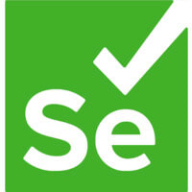

OpenText UFT One and Selenium HQ are leading tools in automated testing. UFT One seems to hold an advantage with its comprehensive range of testing capabilities, though Selenium shines with its open-source nature and flexibility.
Features: UFT One provides extensive testing capabilities, covering GUI, API, and business process testing, while supporting numerous applications and integration with other tools. Selenium HQ focuses on web testing with cross-browser support and compatibility with multiple programming languages.
Room for Improvement: UFT One could improve in browser compatibility, system stability, and support for modern programming languages. Selenium HQ could benefit from better handling of dynamic web content, support for non-web applications, and more user-friendly debugging options.
Ease of Deployment and Customer Service: UFT One is mainly deployed on-premises with some cloud accessibility, offering structured support channels. Selenium HQ supports hybrid cloud deployment, relying on its robust open-source community for support.
Pricing and ROI: UFT One is a commercial product with high licensing costs and reports significant ROI through enhanced capabilities and reduced manual testing. Selenium HQ, being open-source, incurs no licensing fees, offering a low-cost entry point, especially favorable for skilled technical teams.
The development time using UFT can be cut down into half as compared to coding from scratch.
Automation is done very fast, leading to improvements in the QA process and reducing the time needed for test automation.
We can easily achieve a return on investment in one, two, or three years.
Organizations can't wait for this lengthy process, especially when they are under pressure with their timelines.
Support cases are easily created and attended to promptly, depending on urgency.
The technical support is rated eight out of ten.
The marketplace community and forums are what we browse and look after, and we have found solutions whenever we tried to find anything.
I have not had the need to escalate questions to Selenium HQ tech support recently, as open community support is widely available and has been sufficient for our needs.
The tool can be installed on all computers used by developers or test automation engineers.
We can execute thousands of test cases weekly, and our automation coverage using Selenium HQ is approximately eighty-five percent.
One of the key stability issues was that Windows would consume memory without releasing it, leading to regression testing crashes.
Selenium HQ is a scalable solution; it has been in production for the last two years, but I have been working on it for the last six years, so it is definitely scalable.
We frequently encountered stability issues when the browser dependency caused Windows to consume memory without releasing it, leading to crashes during regression testing.
If it could move closer to a no-code or low-code solution, it might dominate the market again.
Incorporating behavior-driven development tests would enhance the capabilities of UFT One.
An automatic update mechanism for Selenium HQ would be beneficial, eliminating the need for manual downloads and updates of browser drivers when new versions are released.
I don't know if we have that capability to provide different data sources such as SQL Server, CSV, or maybe some other databases, so that kind of capability would be great.
There are many open-source tools with no cost, and there are no-code tools that are less expensive than UFT.
It's cheaper than Tricentis Tosca but more expensive than some others.
The pricing or licensing policy of OpenText is a bit expensive, however, it's one of the best solutions in the market.
UFT supports Oracle, SAP, PeopleSoft, and other non-web applications, making automation feasible.
OpenText UFT One offered valuable features by allowing us to build up libraries to streamline repetitive tasks, making scripting much easier.
The object repository is one of the best in the market, allowing creation of a repository useful for all tests.
Selenium HQ supports multiple browsers via grid hosting and offers dynamic configuration setup for testing across Chrome, Edge, and Internet Explorer.
When we were doing these tests manually, it took several hours of effort, and those hours, when counted on the basis of person days, used to be maybe six or seven months of effort, which we can now do every day by running the pipeline.


Our AI-powered functional testing tool accelerates test automation. It works across desktop, web, mobile, mainframe, composite, and packaged enterprise-grade applications.
Read white paper
Selenium HQ is an umbrella project that includes a number of tools and frameworks that allow for web browser automation. In particular, Selenium offers a framework for the W3C WebDriver specification, a platform- and language-neutral coding interface that works with all of the main web browsers.
Selenium is a toolset for automating web browsers that uses the best methods available to remotely control browser instances and simulate a user's interaction with the browser. It enables users to mimic typical end-user actions, such as typing text into forms, choosing options from drop-down menus, checking boxes, and clicking links in documents. Additionally, it offers a wide range of other controls, including mouse movement, arbitrary JavaScript execution, and much more.
Although Selenium HQ is generally used for front-end website testing, it is also a browser user agent library. The interfaces are universal in their use, which enables composition with other libraries to serve your purpose.
The source code for Selenium is accessible under the Apache 2.0 license. The project is made possible by volunteers who have kindly committed hundreds of hours to the development and maintenance of the code.
Selenium HQ Tools
These three main Selenium HQ tools have powerful capabilities:
Reviews from Real Users
Selenium HQ stands out among its competitors for a number of reasons. Two major ones are its driver interface and its speed. PeerSpot users take note of the advantages of these features in their reviews:
Avijit B., an automation tester at a tech services company, writes of the solution, “The driver interface is really useful. When we implement the Selenium driver interface, we can easily navigate through all of the pages and sections of an app, including performing things like clicking, putting through SendKeys, scrolling down, tagging, and all the other actions we need to test for in an application.”
Another PeerSpot reviewer, a software engineer at a financial services firm, notes, “Selenium is the fastest tool compared to other competitors. It can run on any language, like Java, Python, C++, and .NET. So we can test any application on Selenium, whether it's mobile or desktop."
We monitor all Functional Testing Tools reviews to prevent fraudulent reviews and keep review quality high. We do not post reviews by company employees or direct competitors. We validate each review for authenticity via cross-reference with LinkedIn, and personal follow-up with the reviewer when necessary.